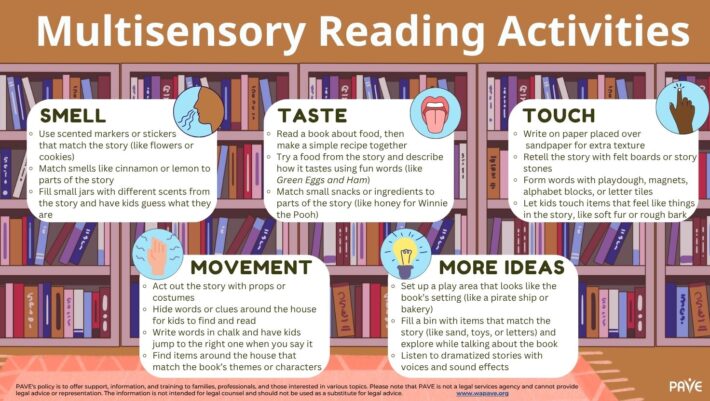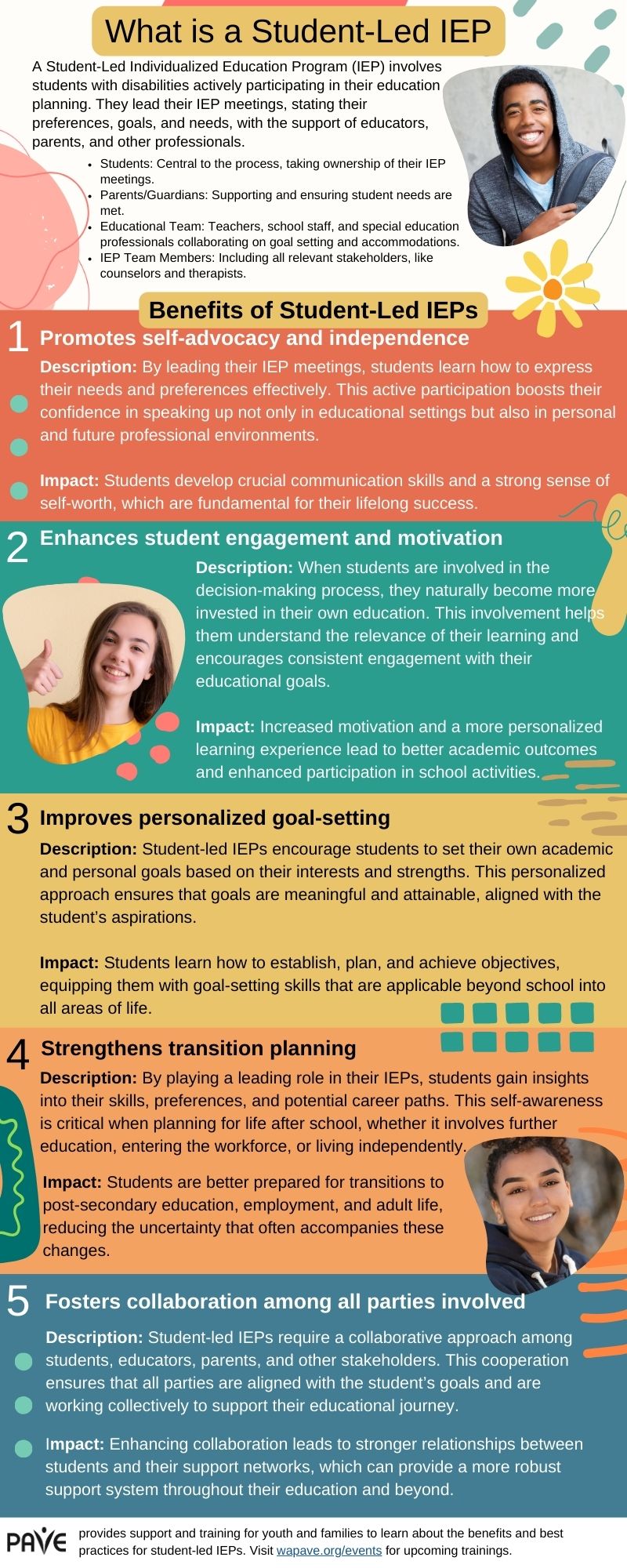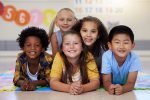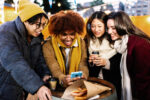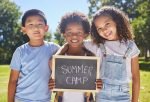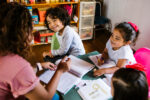Changes in routine, especially during school breaks, can be challenging for families, but using Positive Behavioral Interventions and Supports (PBIS) at home can help create calm, structure, and stronger relationships. PBIS focuses on teaching expected behaviors, using clear communication, and reinforcing positive actions instead of relying on punishment. Families can build supportive routines, model emotional regulation, and use simple strategies to guide behavior at home.
A Brief Overview
- Positive Behavioral Interventions and Supports (PBIS) is a strategy schools use to teach children about expected behavior.
- A key PBIS principle is that punishment fails to teach what to do instead. Adults can model calm responses and self-regulation with tools like self-care and mindfulness.
- Behavior is a form of communication. When children act out, they may be trying to express a need, feeling, or frustration they don’t yet have the words for.
- The easiest way to change a behavior is to point out what a person does right. Remember this catchy phrase, “5-and-1 gets it done,” to ensure five positive interactions for each negative interaction.
- Families can use school-based PBIS strategies at home to create safe, consistent, and predictable environments.
- PAVE provides a video with key information to help families and schools analyze a child’s behavior and develop a positive behavior support plan: Behavior and School: How to Participate in the FBA/BIP Process.
- If you come up with some great behavior support strategies this summer, be sure to share them with the school in the fall!
Introduction
Changes in routine and seasonal transitions can cause emotional upheaval for families. A few strategies, described below, might help families keep things chill this summer and beyond.
These ideas come from education, where research has helped teachers see the benefits from using Positive Behavioral Interventions and Supports (PBIS). PBIS has been implemented in more than 26,000 U.S. schools. The PBIS framework has been shown to decrease disciplinary removals and improve student outcomes, including grades and graduation rates. When done well, PBIS provides positive social skills, communication strategies and “restorative justice,” (working it out instead of punishing) and may prevent 80-90 percent of problem behaviors.
PBIS is often part of a broader approach called Multi-Tiered System of Supports (MTSS), which helps schools and families work together to meet academic, behavioral, and emotional needs through different levels of support.
Positive support makes learning easier
PBIS research highlights problems with punishments, which are called “aversive interventions.” Research shows that a punished child is likely to go into an emotionally dysregulated state (fight/flight/freeze) that actually blocks learning. Chances are low that the child will know what to do next time because the punishment didn’t provide a learning opportunity.
PBIS teaches what to do instead – and how to do it. Adults who calmly guide children and youth toward a new way of problem-solving can interrupt or prevent an escalation and help the child make better and better choices moving forward.
Keep in mind that adults need to stay regulated to help children. PAVE provides resources to help adults work on their own self-control and support their children:
- Short breathing/mindfulness activities for all ages and abilities: Mindfulness Videos
- Article: Self-Care is Critical for Caregivers with Unique Challenges
- Video library: Self-Care Videos for Families Series
Behavior is a child’s attempt to communicate
Simple, consistent, predictable language is critical for teaching and reinforcing behavior, says Kelcey Schmitz, who works for the University of Washington School Mental Health Assessment, Research, and Training (SMART) Center.
“PBIS is a game changer for children and youth with behavior challenges and their teachers and caregivers,” Schmitz says. “In fact, everyone can benefit from PBIS. Behavior is a form of communication, and PBIS aims to reduce problem behavior by increasing appropriate behavior and ultimately improving quality of life for everyone. The same approaches used by schools to prevent problem behaviors and create positive, safe, consistent and predictable environments can be used by families at home.”
Schmitz, an MTSS training and technical assistance specialist, provides the following specific tips for creating a successful PBIS home environment.
Support Positive Behavior before there is a problem
PBIS is set up with three layers – called tiers – of support. The parent-child relationship is strengthened by loving and positive interactions at each level.
Tier 1 support is about getting busy before there is a problem. Much like learning to wash hands to prevent getting sick, expected behavior is taught and modeled to prevent unexpected behaviors. Parents can look at their own actions and choices and consider what children will see as examples of being respectful, responsible, and safe.
Tiers 2 and 3 are where adults provide more support for specific behaviors that are getting in the way of relationships or how the child or youth functions. In a school setting, Tier 2 is for students who need a social group or some extra teaching, practice, and reinforcement.
Tier 3 support includes a Functional Behavioral Assessment (FBA) to find out why the behavior is occurring, and an individualized Behavior Intervention Plan (BIP). PAVE provides a video: Behavior and School: How to Participate in the FBA/BIP Process.
Any student may access supports that include aspects of Social Emotional Learning at all three Tiers. At home, Tiers 2 and 3 naturally will be more blended and may include support from a community provider. Note that targeted interventions in Tiers 2-3 work best when Tier 1 is already well established.
Define, teach, and routinely acknowledge family expectations
Discuss how you want to live as a family and identify some “pillars” (important, building-block concepts) that represent what you value. Talk about what those pillars look, and sound like in everyday routines. To help the family remember and be consistent, choose only 3-5 and create positive statements about them. Here are a few examples:
- Speak in a respectful voice.
- Be responsible for your actions.
- Be safe; keep hands, feet, and objects to self.
Identify a couple of “hot spots” to begin. Challenging behaviors often occur within routines. Perhaps mornings or mealtimes create hot spots for the family. After discussing 1-2 ways to be respectful, responsible, and safe in the morning, teach what each looks like. Have fun with it! Set up “expectation stations” for practicing the plan and assign each family member one pillar to teach to the rest.
Behaviors that get attention get repeated. Notice when a child does the right thing and say something about each success: “I noticed you stopped to pick up your shoes in the hallway. Thanks for putting them away and keeping the walkway safe for others.” The easiest way to change a behavior is to point out what a person does right!
Remember this catchy phrase, “5-and-1 gets it done” to ensure five positive interactions for each negative interaction. When the expected behavior becomes routine, the reinforcement can fade away.
Create engaging and predictable routines
Children crave structure and routine. Adults may look forward to a relaxing evening or weekend, but kids often need regular activity and engagement. Consider that either the kids are busy, or the adults are busy managing bored kids!
Use visuals to create predictability. A visual schedule can display major routines of the day with pictures that are drawn, real photos, or cut-outs from magazines. Create a schedule together, if possible. Parents can ask a child to check the schedule – especially when moving from a preferred to non-preferred activity. It’s hard to argue with a picture!
Set the stage for positive behavior
Teach, pre-teach, and re-teach. Children need to learn behavior just like they learn colors and shapes. A quick reminder can help reinforce a developing skill: “When we get in the car, sit up, buckle up, and smile!”
Give transition warnings or cues to signal the end of one activity and the beginning of another: “In five minutes, it will be bath time.”
First/then statements set up a child for delayed gratification: “First take your bath; then we can play dolls.”
Focus on Go instead of Stop. Children often tune out words like No, Don’t and Stop and only hear the word that comes next, which is what an adult is trying to avoid. Tell a child what to do instead of what not to do: “Take your plate and put it in the sink.” Save Stop and No for dangerous circumstances that need a quick reaction.
Choices prevent power struggles: “Would you rather play for five more minutes or get in the bath now?” “Feel free to choose the pink pajamas or the green ones.”
While these strategies may not eliminate all problem behaviors, they create consistency, predictability, and a more positive atmosphere. They teach new skills to help children get their needs met. The solid foundation will help even if challenging behaviors persist by creating a bedrock for additional layers of support.
Final Thoughts
Supporting positive behavior at home doesn’t require perfection—just patience, consistency, and a willingness to learn alongside your child. By using clear communication, setting routines, and teaching expected behaviors, families can create a calm and connected environment where everyone thrives. These strategies not only make summer smoother but also build skills that carry into the school year. If you come up with some great behavior support strategies this summer, be sure to share them with the school in the fall! Working together, families and schools can create strong, supportive systems that help every child succeed.
Learn More
- Home and Community PBS Website
- Parent Center Hub Positive Behavior Supports Resource Collection
- Intensive Intervention: An Overview for Parents and Families (also available in Spanish / también disponible en español)
- The Association for Positive Behavior Support
- Center on PBIS: Resources for Families
- Family Resources for Challenging Behavior
- The National Center for Pyramid Model Innovations (NCPMI) Resource Library, articles in multiple languages


